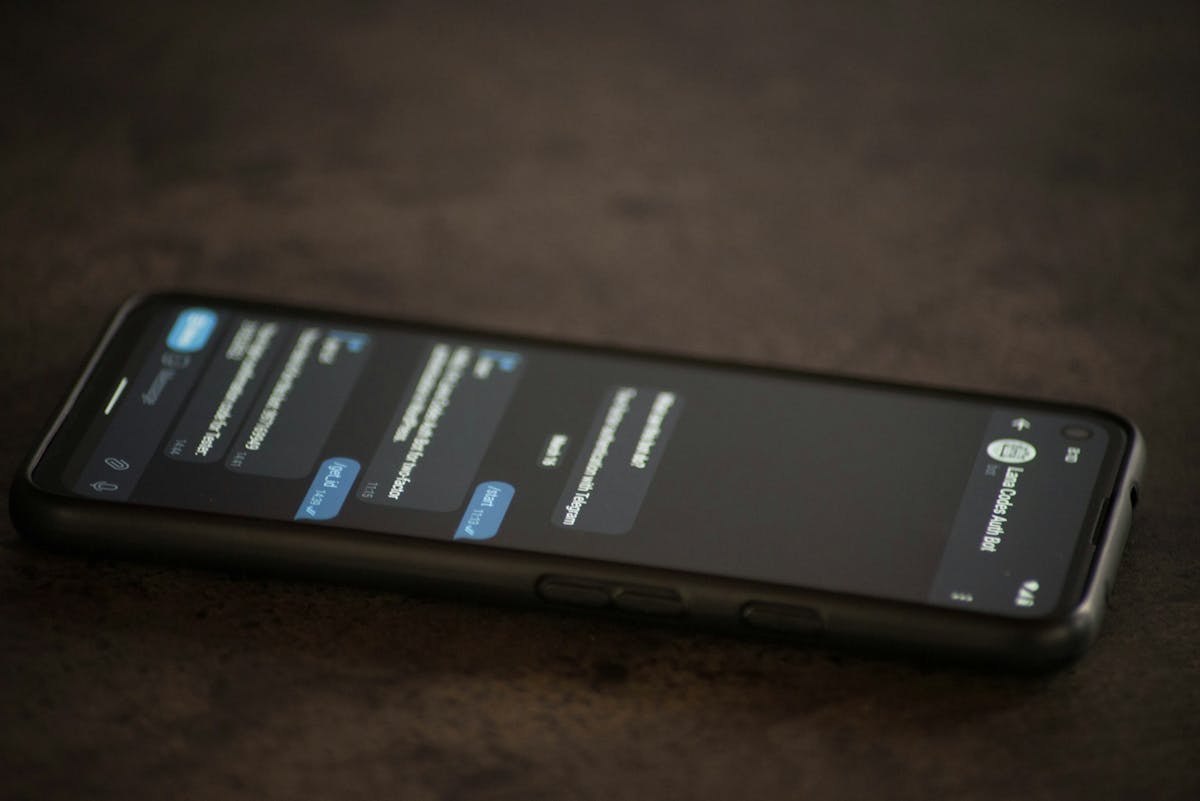How HR Leaders Can Ramp Up Employee Engagement with Real-Time Feedback


Strong employee engagement transforms a passive workforce into one that actively drives company success. This is especially important in non-desk industries like manufacturing and construction, where engagement levels often fall below national averages. When employees feel connected to their organization’s success, productivity, safety, retention, and customer satisfaction improve.
Non-desk workers often struggle with engagement due to limited access to company communication channels. Addressing this gap with effective engagement strategies ensures a more connected and motivated workforce.
What Is Employee Engagement?
Employee engagement goes beyond simple job satisfaction. It's the emotional connection between your people and their work. When employees are engaged, they're personally invested in seeing your company succeed.
Let's clear up some common confusion:
- Engagement isn't happiness—a happy employee might still deliver poor results.
- Engagement differs from satisfaction—satisfied employees might do the minimum, while engaged employees go above and beyond.
- Engagement isn't the same as well-being—though related, engagement specifically focuses on connection to the company.
Based on their attitudes and behaviors, your team members likely fall into four categories:
- Highly engaged: Your brand champions who hold positive views and actively contribute.
- Moderately engaged: They like your company but something holds them back from full commitment.
- Barely engaged: Feel indifferent and are just going through the motions.
- Disengaged: Harbor negative opinions and actively undermine your organization.
Why Is Employee Engagement Important?
Improving employee engagement delivers measurable business results. Organizations with highly engaged teams see:
- 22% higher profitability rates
- 20% higher productivity rates
- 28% lower employee turnover
- 37% higher customer satisfaction
The downside? Disengaged employees cost a medium-size Standard & Poor's (S&P) 500 Index company between $228 million and $355 million annually in lost productivity.
Role of Stakeholders in Improving Employee Engagement
Improving employee engagement isn't just HR's responsibility—it requires commitment across all organizational levels:
- Senior Leadership: Sets the tone through vision, culture, and resources.
- HR Professionals: Design programs and provide measurement tools.
- Line Managers: Directly impact day-to-day employee experience.
- Individual Employees: Actively participate and provide feedback.
When everyone recognizes their role in the engagement equation, you create an environment where commitment and productivity naturally flourish.
Actionable Strategies on How to Improve on Employee Engagement
Want to transform your workforce engagement? Here are proven strategies you can implement today:
Implement Regular Employee Surveys
Before launching any initiative, you need to know where you stand. Employee surveys provide the baseline data needed to create targeted improvements. Consider using:
- Short, frequent pulse surveys to monitor engagement as your culture evolves
- More detailed quarterly or annual assessments for deeper insights
These tools reveal what's working and what needs attention, but the key is in taking action on survey results. For manufacturing and industrial HR teams, surveys help identify floor-specific issues like shift scheduling concerns, equipment frustrations, or communication gaps between management and production teams.
Including questions about physical working conditions and safety protocols gives blue-collar workers confidence that their practical concerns matter. Surveys tailored to frontline workers should be accessible via mobile devices or kiosks on the production floor. Keeping completion time under five minutes accommodates busy schedules and limited break times.
Recognize and Reward Top Performers
When people feel valued, engagement naturally increases. Create a recognition program that includes:
- Meaningful incentives aligned with your company values
- Platforms for peer recognition
For example, Subsplash created an "Animal of the Week" program where employees nominate colleagues who exemplify company values. This is just one way of recognizing employee contributions, creating a culture of appreciation.
In manufacturing environments, recognition programs can highlight safety achievements, production milestones, quality improvements, or problem-solving innovations. Non-desk workers respond particularly well to visible recognition—think safety leaderboards, production milestone celebrations, or quality achievement badges.
Public acknowledgment during shift changeovers or team huddles carries significant weight with frontline teams who might otherwise feel invisible to leadership.
Embrace Flexibility in Your Approach
There's no magic formula for improving employee engagement. What works for one team might fall flat with another. Regularly analyze your data to identify which strategies resonate with your unique workforce. This flexibility proves especially important in blue-collar industries with diverse shift patterns and varying job demands.
Manufacturing HR should consider shift-specific initiatives rather than one-size-fits-all programs. Night shift workers often feel disconnected from company culture—targeted engagement efforts during these hours demonstrate inclusivity. Similarly, maintenance teams have different needs than production lines.
Adjusting engagement strategies based on department feedback shows respect for different workplace realities and builds trust in management's understanding of floor-level concerns.
Utilize Employee Engagement Software
The right tools amplify your engagement efforts. Consider implementing:
- Employee lifecycle surveys to improve experiences throughout the employee journey
- Engagement reporting that provides actionable insights
- Action planning platforms that enable accountability
For manufacturing HR teams, engagement software must accommodate non-desk workers with limited computer access. Look for mobile-first solutions for engagement offering mobile accessibility, multilingual support, and offline functionality. Frontline-friendly platforms with simple interfaces work best for production environments where technical literacy varies.
Many blue-collar workers prefer text-based communication over email—SMS-enabled engagement tools see significantly higher participation rates than traditional corporate communication channels. Select software that integrates with shift scheduling systems to ensure messaging reaches workers at appropriate times.
Yourco is the ideal solution for manufacturing HR teams looking to enhance employee engagement, especially among non-desk workers. As an SMS-based employee app, Yourco ensures seamless communication without requiring employees to download an app or access emails—critical for production environments where mobile accessibility is a priority.
Measuring and Sustaining Employee Engagement
Tracking engagement provides the foundation for ongoing improvements in your workforce strategy. Regular measurement coupled with consistent action creates lasting change in how employees connect with their work and your organization.
Effective Measurement Techniques
You can't improve what you don't measure. Reliable engagement measurement includes:
- Engagement Surveys: Comprehensive assessments that provide baseline data.
- Pulse Surveys: Shorter, more frequent check-ins that track engagement in real-time.
- Employee Net Promoter Score (eNPS): A simple but powerful indicator of how likely employees are to recommend your organization.
- Exit Interviews: Valuable insights into why people leave.
- Performance Metrics: Tracking productivity, quality of work, and efficiency helps gauge the impact of engagement on overall performance.
For the clearest picture, combine quantitative metrics (like turnover rates) with qualitative feedback from open-ended questions. Manufacturing HR professionals should pay particular attention to department-specific metrics, as engagement often varies dramatically between production areas, maintenance teams, and warehouse operations.
Shop floor workers respond better to in-person pulse checks than digital surveys—train shift supervisors to gather informal feedback during daily operations.
Production downtime, safety incidents, and quality metrics often correlate strongly with engagement levels in manufacturing environments. Track these alongside traditional engagement measures for a complete picture of workforce health.
Long-Term Implementation and Sustainability
Sustaining employee engagement requires strategy, not just a one-time initiative:
- Set Realistic Expectations: You won't transform engagement overnight. Establish specific, measurable goals.
- Prioritize Empowerment Over Monitoring: Focus on trusting employees rather than tracking their activities, especially in remote and hybrid environments.
- Decentralize Analytics: Equip team leaders with people analytics tools so they can respond to engagement challenges quickly.
- Address Common Barriers: Research identifies six major engagement killers: insufficient recognition, limited growth opportunities, resistance to innovation, poor communication, weak collaboration, and lack of empowerment.
- Implement Feedback Loops: Maintain engagement by creating systems for crowdsourced feedback.
- Evolve Your Strategies: What works today may not work tomorrow. Regularly revisit your approaches based on measured results.
Addressing Challenges Specific to Non-Desk Workers
Manufacturing, logistics, and industrial organizations face unique challenges in connecting with frontline teams. The following strategies address the specific barriers that prevent blue-collar employees from fully engaging with your company. Similar challenges are faced in other industries, such as construction, where strategies for construction industry engagement can be applied.
How to Improve on Employee Engagement for Non-Desk Workers
Your non-desk workers face unique engagement challenges.
- Accessibility challenges are primary barriers. Over 80% of frontline workers don't have corporate email addresses, and more than 40% can't access company intranets while working, cutting them off from important information.
- Communication gaps leave these workers feeling isolated. A significant 40% of deskless workers feel disconnected from management, and 44% find corporate communications irrelevant to their roles.
- Operational inefficiencies arise when workers can't easily access information or provide feedback.
To effectively improve frontline employee engagement, consider implementing efficient communication for deskless workers such as:
- Mobile-first communication platforms that don't require corporate email
- SMS-based tools (like Yourco!) that work on any mobile device
- Visual communication methods for time-constrained environments
- Multilingual options for diverse workforces
- Regular feedback channels that encourage two-way communication
Manufacturing HR teams should establish consistency across shifts, ensuring third-shift workers receive the same communication as day shifts. Information boards in break rooms supplement digital communication for workers without smartphones.
Team huddles before shift start provide updates without disrupting production. For multilingual workforces, translate all materials and provide interpreters for important meetings.
Digital signage throughout production areas keeps everyone informed without requiring them to seek out information. Regular walk-throughs from management demonstrate investment in frontline concerns and create informal feedback opportunities.
Connect Your Workforce with Simple, Effective Communication
Employee engagement needs ongoing attention as worker expectations change. Start by measuring engagement with customized surveys and creating plans tailored to non-desk employees. Effective strategies include recognition programs, flexible solutions based on feedback, and technology that connects workers where they are.
Yourco provides an SMS-based platform that connects HR with manufacturing, industrial, and frontline workers through the devices they already use. Unlike email systems that production workers rarely access, Yourco's solution delivers announcements, surveys, and recognition directly to personal phones. Yourco ensures that critical messages reach employees instantly—without requiring app downloads, email access, or internet connectivity. With AI-powered translations in 135+ languages, Yourco eliminates language barriers, fostering better communication across diverse workforces. Its built-in polling and surveys allow HR teams to gather real-time feedback, improving engagement and reducing turnover. Additionally, custom permissions and multiple integrations with 240+ HRIS and payroll systems make implementation seamless, while enterprise-grade security ensures compliance and data protection.
Try Yourco for free today or schedule a demo and see the difference the right workplace communication solution can make in your company.


